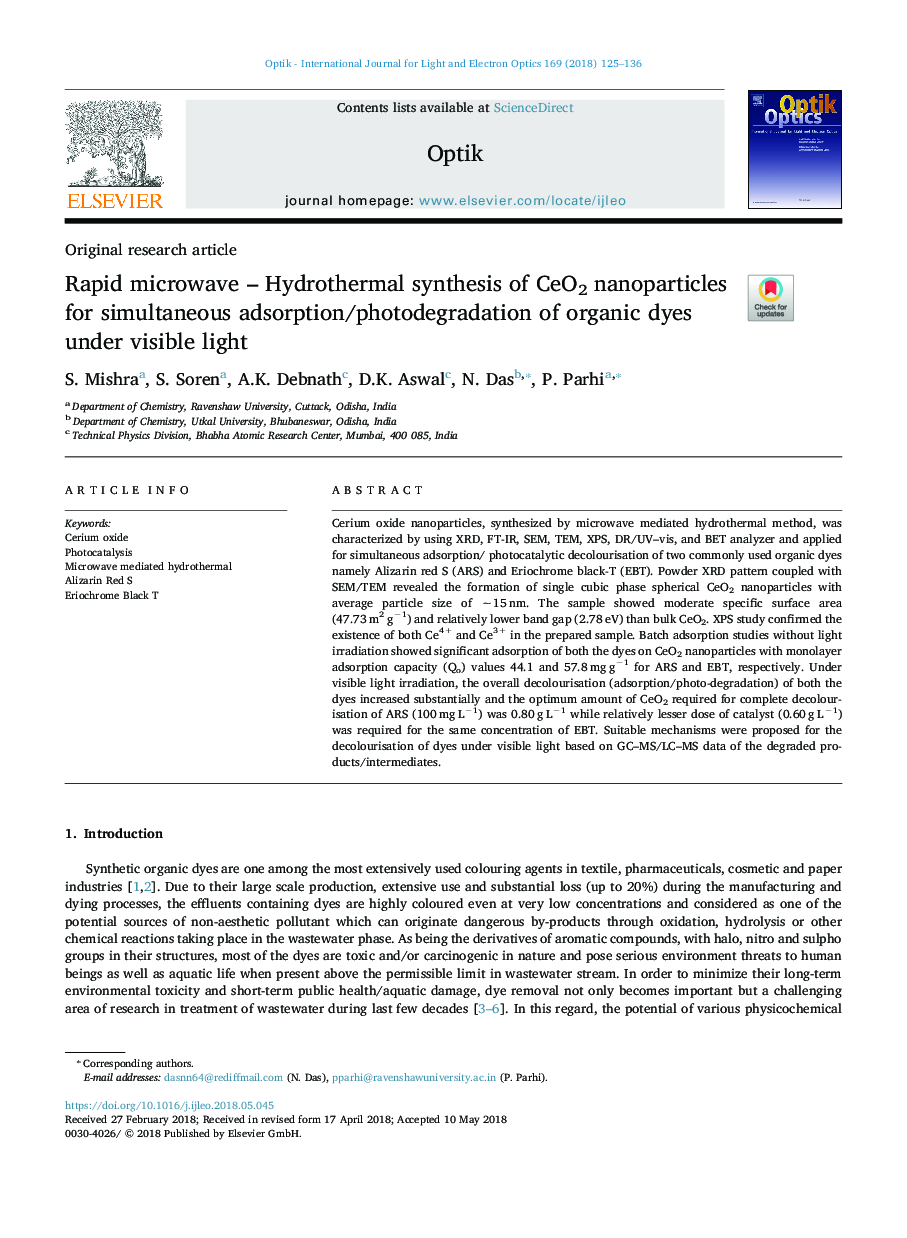| Article ID | Journal | Published Year | Pages | File Type |
|---|---|---|---|---|
| 7223355 | Optik - International Journal for Light and Electron Optics | 2018 | 12 Pages |
Abstract
Cerium oxide nanoparticles, synthesized by microwave mediated hydrothermal method, was characterized by using XRD, FT-IR, SEM, TEM, XPS, DR/UV-vis, and BET analyzer and applied for simultaneous adsorption/ photocatalytic decolourisation of two commonly used organic dyes namely Alizarin red S (ARS) and Eriochrome black-T (EBT). Powder XRD pattern coupled with SEM/TEM revealed the formation of single cubic phase spherical CeO2 nanoparticles with average particle size of â¼15â¯nm. The sample showed moderate specific surface area (47.73â¯m2â¯gâ1) and relatively lower band gap (2.78â¯eV) than bulk CeO2. XPS study confirmed the existence of both Ce4+ and Ce3+ in the prepared sample. Batch adsorption studies without light irradiation showed significant adsorption of both the dyes on CeO2 nanoparticles with monolayer adsorption capacity (Qo) values 44.1 and 57.8â¯mgâ¯gâ1 for ARS and EBT, respectively. Under visible light irradiation, the overall decolourisation (adsorption/photo-degradation) of both the dyes increased substantially and the optimum amount of CeO2 required for complete decolourisation of ARS (100â¯mgâ¯Lâ1) was 0.80â¯gâ¯Lâ1 while relatively lesser dose of catalyst (0.60â¯gâ¯Lâ1) was required for the same concentration of EBT. Suitable mechanisms were proposed for the decolourisation of dyes under visible light based on GC-MS/LC-MS data of the degraded products/intermediates.
Related Topics
Physical Sciences and Engineering
Engineering
Engineering (General)
Authors
S. Mishra, S. Soren, A.K. Debnath, D.K. Aswal, N. Das, P. Parhi,
